Prepare to excel in the world of refrigeration and air conditioning with the EPA 608 Study Guide PDF. This comprehensive guide will equip you with the knowledge and skills necessary to pass the EPA 608 certification exam and become a certified technician.
Delve into the intricacies of refrigeration and air conditioning systems, explore the properties of refrigerants, and master troubleshooting techniques. The guide provides a solid foundation in environmental regulations, ensuring your compliance with industry standards.
EPA 608 Certification Overview

EPA 608 certification is a crucial requirement for individuals working with refrigerants and air conditioning systems. It ensures that technicians possess the necessary knowledge and skills to handle these substances safely and in compliance with environmental regulations.
The certification covers various aspects of refrigerant management, including proper handling, recovery, recycling, and disposal. It also includes knowledge of refrigerant regulations, environmental impact, and safety procedures.
Brief History and Background
EPA 608 certification was established in 1993 under the Clean Air Act. The certification aims to protect the ozone layer and reduce the release of harmful refrigerants into the atmosphere.
Study Guide Structure and Content
The EPA 608 study guide is a comprehensive resource that covers all the essential topics required for passing the EPA 608 certification exam. It is organized into several sections, each focusing on a specific aspect of the exam.
Key Sections and Topics
The key sections covered in the study guide include:
- Refrigerants and Their Properties
- Refrigeration Systems and Components
- Refrigerant Recovery and Recycling
- Leak Detection and Repair
- Safe Handling of Refrigerants
- Recordkeeping and Reporting
Study Materials and Resources
The study guide also includes a variety of study materials and resources to help you prepare for the exam. These include:
- Chapter summaries
- Practice questions
- Glossary of terms
- Sample test questions
Core Refrigeration and Air Conditioning Principles
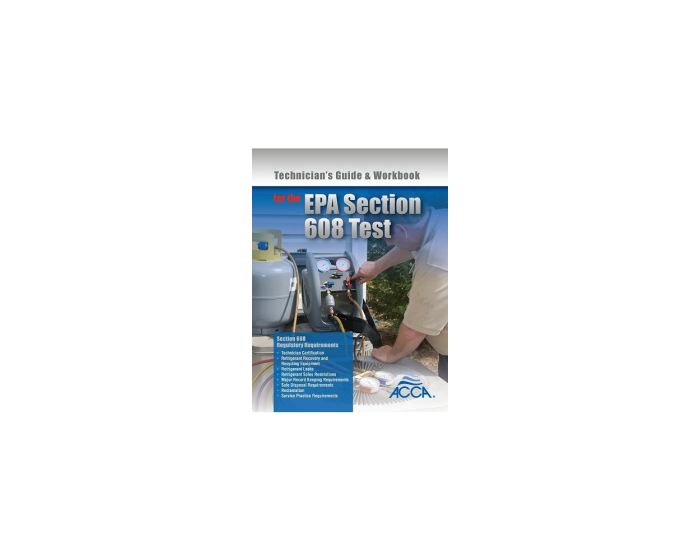
Refrigeration and air conditioning systems play a crucial role in maintaining comfortable and productive environments. They operate based on fundamental principles that involve the transfer of heat and the manipulation of refrigerants. This section will explore these principles, the components involved in a typical system, and how they work together to achieve the desired cooling or heating effects.
Components of a Refrigeration System, Epa 608 study guide pdf
- Compressor:The heart of the system, the compressor pressurizes the refrigerant gas, increasing its temperature.
- Condenser:The condenser releases the heat absorbed by the refrigerant in the evaporator. It is typically located outdoors.
- Evaporator:The evaporator absorbs heat from the surrounding air or space, cooling it down. It is located indoors.
- Expansion Valve:The expansion valve controls the flow of refrigerant into the evaporator, regulating the cooling capacity.
Refrigeration Cycle
The refrigeration cycle describes the continuous process of heat transfer within the system:
- Compression:The compressor pressurizes the refrigerant gas, raising its temperature and pressure.
- Condensation:In the condenser, the high-pressure gas releases heat to the surrounding air, condensing into a liquid.
- Expansion:The liquid refrigerant passes through the expansion valve, which reduces its pressure and temperature.
- Evaporation:In the evaporator, the low-pressure liquid refrigerant absorbs heat from the surrounding air, boiling and turning into a gas.
Air Conditioning System
Air conditioning systems extend the functionality of refrigeration systems by combining cooling with dehumidification. They typically include additional components such as:
- Blower:The blower circulates air through the evaporator, facilitating heat transfer.
- Filter:The filter removes impurities and allergens from the air.
- Thermostat:The thermostat monitors the temperature and controls the system’s operation.
Heat Pump Systems
Heat pump systems offer both heating and cooling capabilities. They operate on the same principles as refrigeration systems but can reverse the flow of refrigerant to achieve heating:
- Heating Mode:The evaporator becomes the condenser, absorbing heat from the outdoor air.
- Cooling Mode:The condenser becomes the evaporator, releasing heat to the outdoor air.
Refrigerants and Their Properties
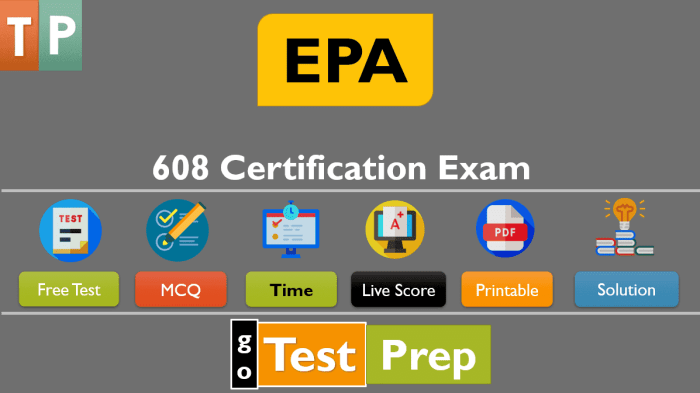
Refrigerants are essential components of refrigeration and air conditioning systems, serving as the medium that absorbs and releases heat during the cooling process. EPA 608-certified systems utilize various types of refrigerants, each with distinct physical and chemical properties.
Types of Refrigerants
EPA 608-certified systems primarily use hydrofluorocarbons (HFCs), hydrochlorofluorocarbons (HCFCs), and natural refrigerants such as ammonia, carbon dioxide, and hydrocarbons. HFCs are commonly used due to their non-flammability and high energy efficiency, while HCFCs are being phased out due to their ozone-depleting potential.
Natural refrigerants offer environmental benefits but may have safety or performance limitations.
Physical and Chemical Properties
The physical and chemical properties of refrigerants impact their performance and safety in refrigeration and air conditioning systems. These properties include boiling point, freezing point, density, specific heat, and thermal conductivity. The boiling point determines the refrigerant’s ability to absorb heat, while the freezing point affects its performance at low temperatures.
Density influences the refrigerant’s flow characteristics, and specific heat and thermal conductivity affect its heat transfer efficiency.
If you’re looking to ace your EPA 608 certification exam, our comprehensive study guide PDF has everything you need to succeed. Plus, don’t forget to check out our amsco ap gov answer key for insights into upcoming exams. With our resources, you’ll be well-equipped to pass your EPA 608 exam with flying colors.
Environmental Regulations and Safety Considerations
Refrigerants are subject to environmental regulations due to their potential impact on the ozone layer and global warming. The Montreal Protocol and its amendments aim to phase out ozone-depleting substances, including certain refrigerants. Additionally, refrigerants can pose safety hazards, such as flammability, toxicity, and asphyxiation.
Proper handling, storage, and disposal practices are crucial to ensure the safe use of refrigerants.
System Maintenance and Troubleshooting
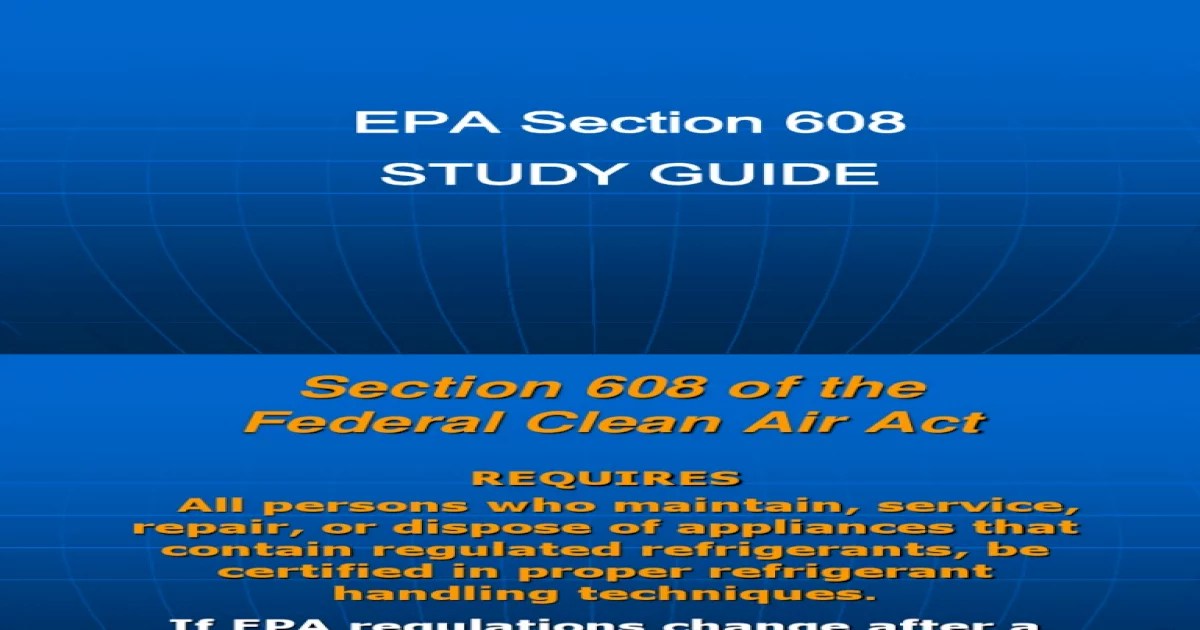
Proper system maintenance is crucial for optimal performance and longevity of refrigeration and air conditioning systems. It ensures efficient operation, reduces energy consumption, and minimizes the risk of breakdowns.To effectively troubleshoot common issues in these systems, follow a step-by-step guide:
-
-*Identify the problem
Observe the system’s behavior, note any unusual sounds, leaks, or performance changes.
-*Gather information
Collect data such as refrigerant levels, pressures, and temperatures.
-*Check for obvious issues
Inspect electrical connections, filters, and other components for damage or loose connections.
-*Use diagnostic tools
Employ gauges, meters, and leak detectors to gather specific data and identify potential issues.
-*Consult technical documentation
Refer to the system’s manual or manufacturer’s website for troubleshooting procedures.
-*Repair or replace
Based on the diagnosis, make necessary repairs or replace faulty components.
-*Test and verify
After repairs, test the system to ensure proper operation and performance.
Environmental Regulations and Compliance
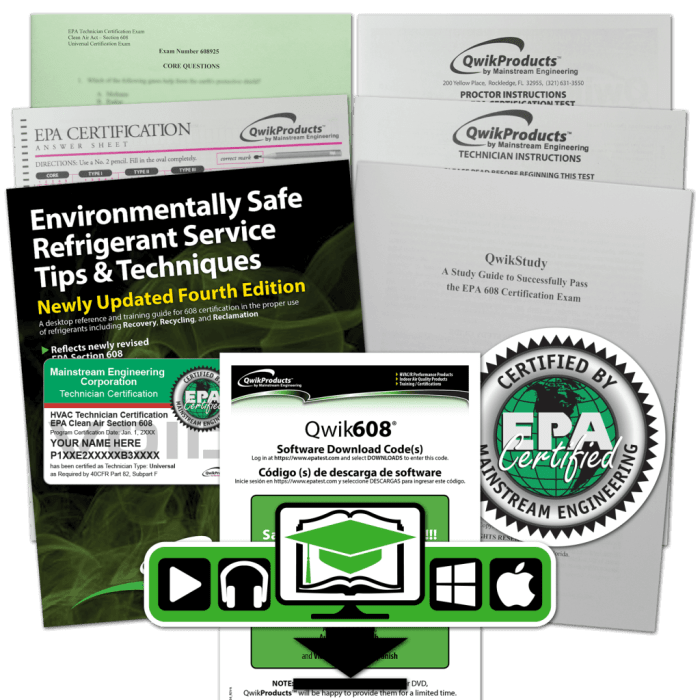
The Environmental Protection Agency (EPA) has established regulations and requirements for handling refrigerants to protect the environment and human health. These regulations aim to minimize the release of refrigerants into the atmosphere, as they can contribute to ozone depletion and global warming.
Impact of Refrigerant Emissions on the Environment
- Ozone Depletion:Some refrigerants, known as chlorofluorocarbons (CFCs) and hydrochlorofluorocarbons (HCFCs), contain chlorine and bromine atoms. When released into the atmosphere, these atoms can react with ozone molecules, breaking them down and depleting the ozone layer. The ozone layer protects the Earth from harmful ultraviolet (UV) radiation.
- Global Warming:Refrigerants are potent greenhouse gases, meaning they trap heat in the atmosphere. When released, they contribute to global warming and climate change.
Proper Disposal and Recycling Practices
To comply with EPA regulations and protect the environment, it is essential to dispose of and recycle refrigerants properly. This involves:
- Recovery:Using specialized equipment to remove refrigerant from a system before servicing or disposal.
- Recycling:Reclaiming refrigerant from used systems and cleaning it to meet industry standards for reuse.
- Destruction:In some cases, refrigerants may need to be destroyed in a controlled environment to prevent their release into the atmosphere.
Practice Questions and Exam Preparation
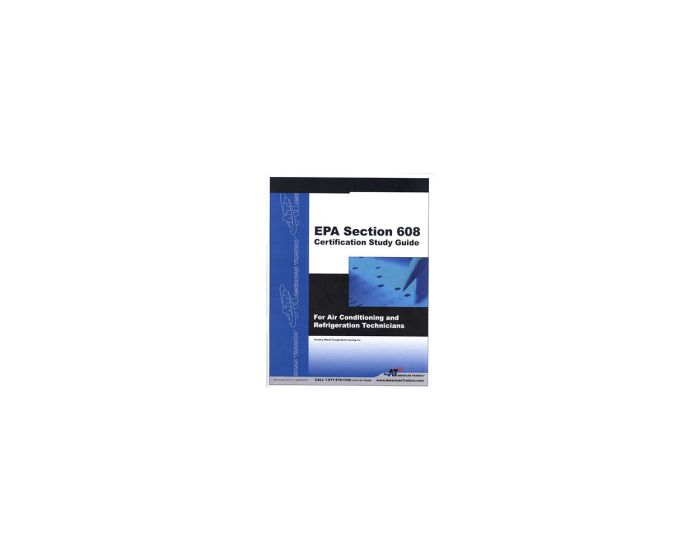
Assessing your comprehension of the study guide material is crucial. This section provides practice questions and effective exam preparation strategies to enhance your test-taking skills and maximize your chances of success.
Practice Questions
Engage in practice questions that cover the key concepts and principles Artikeld in the study guide. These questions are designed to reinforce your understanding and identify areas where further review is necessary.
Exam Preparation Strategies
Adopt effective exam preparation strategies to optimize your performance. These strategies include:
- Review Regularly:Regularly review the study guide material to reinforce your understanding and retain information.
- Practice Active Recall:Actively recall information by attempting practice questions or summarizing key concepts without referring to your notes.
- Understand Concepts, Not Memorize:Focus on comprehending the underlying principles rather than simply memorizing facts.
- Time Management:Familiarize yourself with the exam format and allocate your time wisely during the actual exam.
Tips for Improving Test-Taking Skills
Enhance your test-taking skills with these valuable tips:
- Read Instructions Carefully:Pay close attention to the instructions provided on the exam.
- Answer Questions Confidently:Even if you are unsure of an answer, make an educated guess.
- Manage Time Effectively:Allocate your time wisely and avoid spending too much time on any one question.
- Review Your Answers:If time permits, review your answers before submitting the exam.
FAQ Section: Epa 608 Study Guide Pdf
What is the purpose of EPA 608 certification?
EPA 608 certification demonstrates your competence in handling refrigerants and ensures compliance with environmental regulations.
What topics are covered in the EPA 608 study guide?
The guide covers core refrigeration and air conditioning principles, refrigerant properties, system maintenance, troubleshooting, and environmental regulations.
How can I prepare for the EPA 608 certification exam?
Utilize the EPA 608 Study Guide PDF, practice questions, and exam preparation tips to enhance your understanding and improve your chances of success.